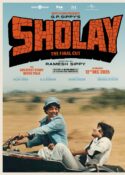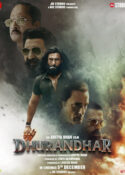Note: The following is a passage written by Karan Johar himself on the film ‘Saawariya’. The original copy does not belong to BollySpice.com and can be found in Tehelka Magazine, Vol 4, Issue 45, Dated Nov 24, 2007.
Sanjay Leela Bhansali understands heartbreak and beauty. His critics don’t, says KARAN JOHAR on a director who moves him much.
OPERATIC. INTENSELY, consummately operatic. That is what best describes Sanjay Leela Bhansali’s cinema for me. He combines the visual and the emotional in a way that few contemporary Indian directors do. He is opulent, he is theatrical, he has scale, yet he has gut. He has emotional heart. It is immensely difficult to balance and connect these qualities the way Sanjay does without keeling over, and I have been blown by his work ever since I saw his first film Khamoshi. Like mine, Sanjay’s films are often criticised for being too dressed and over opulent. But the truth is Sanjay is unafraid to visit the past. His aesthetic draws hugely both from his formal training at the Film and Television Institute of India and his exposure to European cinema — Fellini, Baz Luhrmann — and from the golden era of Hindi cinema — Raj Kapoor, Guru Dutt, Bimal Roy. To that, he brings his own individual sensibility. This combination is rare in directors in India today.
Take Devdas. The industry buzz behind the scenes on that film was dismal. In this sappy age, who’s interested in a drunk loser who can’t get his love and dies in the end? And to use Shah Rukh, Madhuri and Aishwarya for such a story? People thought it was suicidal! But Sanjay took the original simple story and gave it a big screen tadka. He kept the pain but gave it magnitude and scale. The song sequence in which Shah Rukh carries Aishwarya’s doli had me sobbing.
The climactic scene where she runs with her 9-yard sari trailing behind her, and the red spills in stark contrast against the white marble floor… it was exquisite. The transformation amazed me. I could never have imagined the original story like that. What Sanjay did with Devdas is akin to taking an intimate little family drama like Masoom and turning it into a monstrous family saga like Kabhi Khushi Kabhie Gham. To pull that off requires great passion, vision and skill, and Sanjay has all of that.
In many ways, I have been influenced as a director by Sanjay. I never knew love could have such ebullient energy till I saw Hum Dil De Chuke Sanam — my favourite Bhansali film. Such energy, such beauty, such heartbreak, such pain. And such a soundtrack. I loved the scene where Ajay Devgan gets drunk. And Aishwarya’s introductory sequence. My technique improved watching this film. I learnt the thrill of the wide angle and the top shot — both of which are apparent in K3G.
Sanjay’s decision to switch gear and make a character intensive film like Black after the mass hysteria that surrounded Devdas also moved me. Subconsciously, it gave me the courage to move beyond K3G and work on a small, two-character film like My Name is Khan. Black was criticised for drawing too heavily on The Miracle Worker but I think Sanjay drew out one of Rani Mukherjee’s best performances in this film: her phone call to her mother towards the end of the film still gives me a catch in my throat.
CINEMA CONSUMES Sanjay. He lives from one film to the next. They are his lifeline, his single driving force. Apart from his mother who he is extremely close to, he seems to have no friends or family other than the cast and crew of the film he’s working on. Unrequited love is a major strand in his work — I’m not sure if that is merely an aesthetic fascination or it springs from his personal life. The curious thing is that though he is highly intense and reclusive, unlike the persona his films suggest, Sanjay is also a very fun-loving and entertaining person. Humour is his undiscovered gift.
Over a long a career, every director makes lesser and greater films. But despite the criticism he faces, I believe Sanjay’s work will breathe for a long time. Art can never have unanimous takers, and hindsight is often more generous in its recognition. Many of the films we call cinematic gems today — Awara, Pyaasa, Chaudhvi Ka Chand, Do Bigha Zameen — were released to mixed reception in their time. Karz was not a universal hit; Kaagaz ki Phool was a resounding disaster and almost killed a part of Guru Dutt. In the same way, the real assessment of Sanjay’s work will be in the future.









